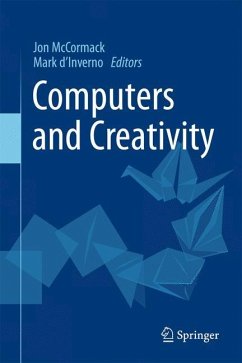The scientific approach of this book transcends the limits of art literature in that it also develops geometric theories of gestures and distributed identities, also known as swarm intelligence.
We exemplify this approach in the framework of free jazz, which is a prototypical creative and collaborative art form. Leader artists such as John Coltrane, Pharoah Sanders, Cecil Taylor, Sun Ra, The Art Ensemble of Chicago, Albert Ayler, Don Cherry, and Archie Shepp are presented in their strongest works and theories.
The pillars of our theory of collaboration are built from psychologist Mihaly Csikszentmihalyi's flow, physicist Gilles Châtelet's gestures, and computer scientist Bill Wulf's collaboratories.
We exemplify this approach in the framework of free jazz, which is a prototypical creative and collaborative art form. Leader artists such as John Coltrane, Pharoah Sanders, Cecil Taylor, Sun Ra, The Art Ensemble of Chicago, Albert Ayler, Don Cherry, and Archie Shepp are presented in their strongest works and theories.
The pillars of our theory of collaboration are built from psychologist Mihaly Csikszentmihalyi's flow, physicist Gilles Châtelet's gestures, and computer scientist Bill Wulf's collaboratories.
"Managing innovation and spurring team creativity while working under constraints are key ingredients for success in today's industries. Surprisingly enough, there is an artistic domain in which such concerns are also paramount--jazz improvisation. While understanding how such multifarious collaborations can be encouraged and even nurtured is still a work in progress, this book offers some suggestions on how such endeavors can be approached and theorized, at least in the world of 20th century free jazz music.[...] In summary, the suggested line of thought about the science of collaboration is obviously still undergoing work, and some issues are somewhat abstruse. Anyone interested in the emergence of collaboration, be it in musical, artistic, or innovative processes, will get something out of this book." P. Jouvelot, ACM Computing Reviews, May 2009
"[This book] is at once a contribution to mathematical music theory, the first volume in a Springer-Verlag series on computational music science, and a manifesto on contemporary free jazz as a cultural achievement. ... As a manifesto on the music of a most gifted mathematician, or the mathematically inflected thought of a gifted musician, Mazzola's book exhibits the kind of energy, vision and passion that he brings to his vocation, and we are richer for it." Charles Turner (2011): Book Review, Jazz Perspectives, 5:1, 105-109
"[This book] is at once a contribution to mathematical music theory, the first volume in a Springer-Verlag series on computational music science, and a manifesto on contemporary free jazz as a cultural achievement. ... As a manifesto on the music of a most gifted mathematician, or the mathematically inflected thought of a gifted musician, Mazzola's book exhibits the kind of energy, vision and passion that he brings to his vocation, and we are richer for it." Charles Turner (2011): Book Review, Jazz Perspectives, 5:1, 105-109
"Managing innovation and spurring team creativity while working under constraints are key ingredients for success in today's industries. Surprisingly enough, there is an artistic domain in which such concerns are also paramount--jazz improvisation. While understanding how such multifarious collaborations can be encouraged and even nurtured is still a work in progress, this book offers some suggestions on how such endeavors can be approached and theorized, at least in the world of 20th century free jazz music.[...] In summary, the suggested line of thought about the science of collaboration is obviously still undergoing work, and some issues are somewhat abstruse. Anyone interested in the emergence of collaboration, be it in musical, artistic, or innovative processes, will get something out of this book." P. Jouvelot, ACM Computing Reviews, May 2009
"[This book] is at once a contribution to mathematical music theory, the first volume in a Springer-Verlag series on computational music science, and a manifesto on contemporary free jazz as a cultural achievement. ... As a manifesto on the music of a most gifted mathematician, or the mathematically inflected thought of a gifted musician, Mazzola's book exhibits the kind of energy, vision and passion that he brings to his vocation, and we are richer for it." Charles Turner (2011): Book Review, Jazz Perspectives, 5:1, 105-109
"[This book] is at once a contribution to mathematical music theory, the first volume in a Springer-Verlag series on computational music science, and a manifesto on contemporary free jazz as a cultural achievement. ... As a manifesto on the music of a most gifted mathematician, or the mathematically inflected thought of a gifted musician, Mazzola's book exhibits the kind of energy, vision and passion that he brings to his vocation, and we are richer for it." Charles Turner (2011): Book Review, Jazz Perspectives, 5:1, 105-109








